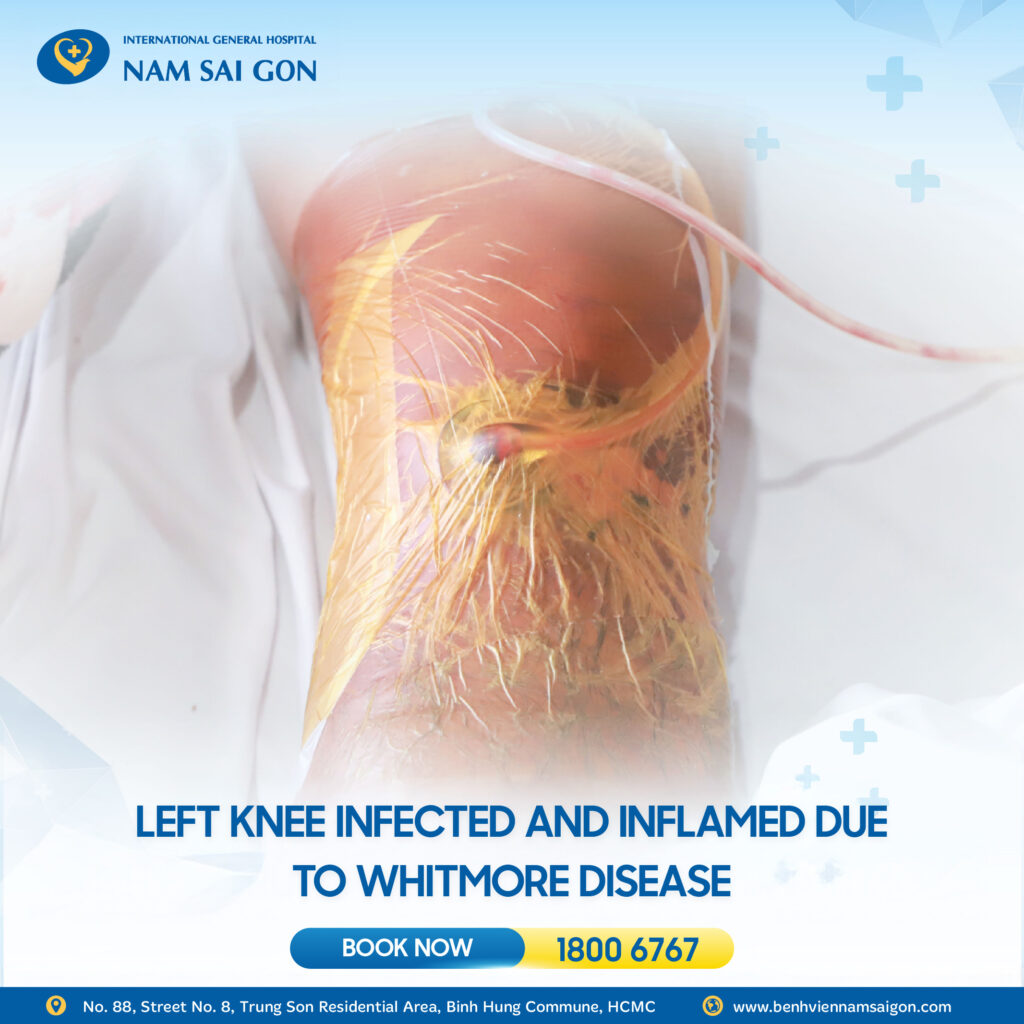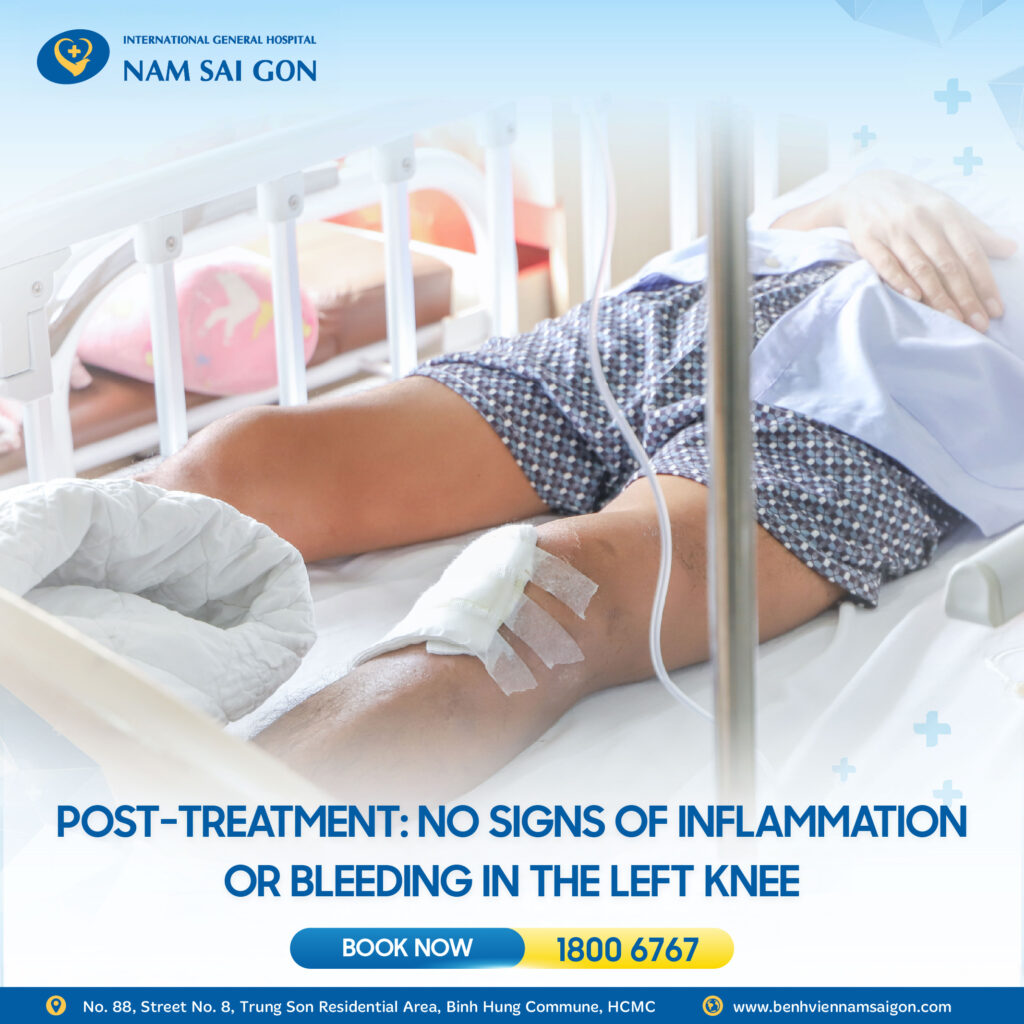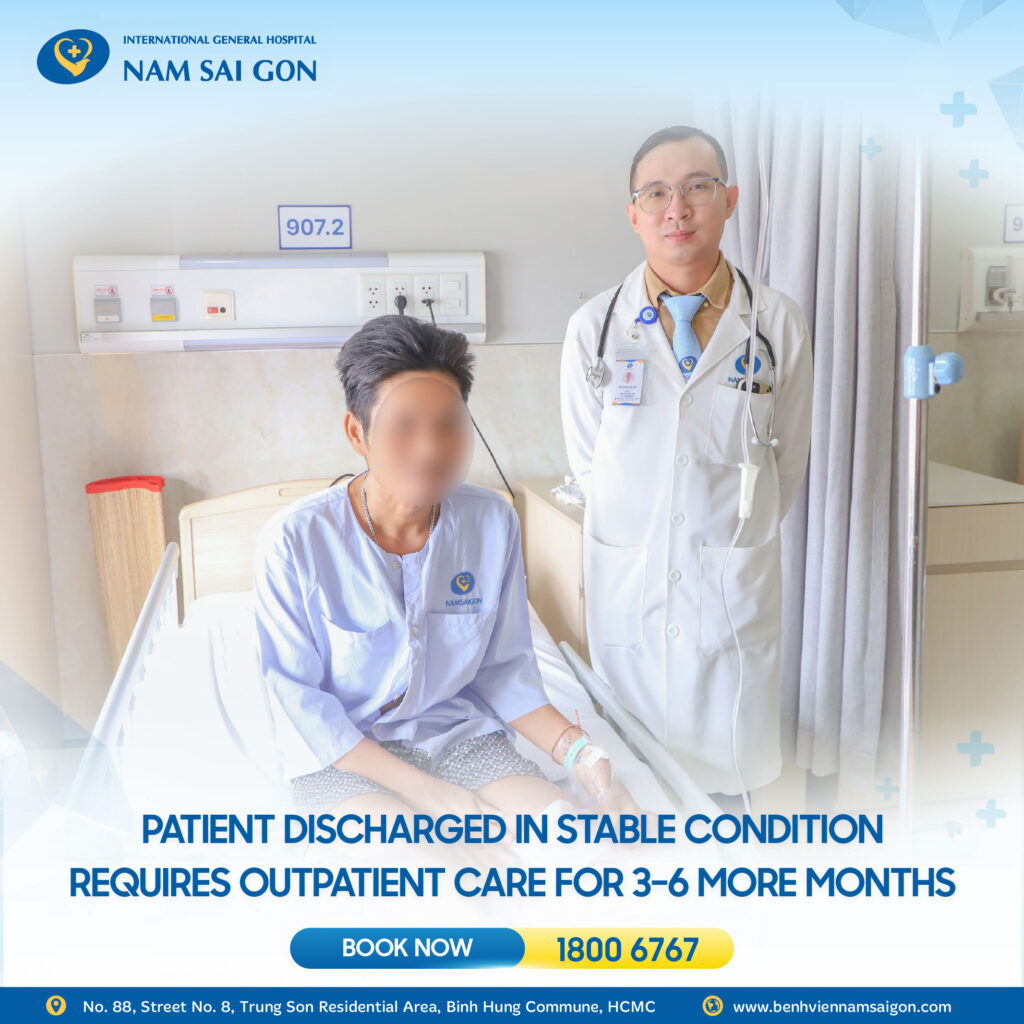SURPRISING DISCOVERY OF “FLESH-EATING BACTERIA” FROM A KNEE JOINT INFLAMMATION SITE
-
Author: BỆNH VIỆN ĐA KHOA QUỐC TẾ NAM SÀI GÒN
-
23/04/2025
-
3,168
The General Internal Medicine Department at Nam Sai Gon International General Hospital recently saved the life of a 42-year-old man suffering from severe sepsis caused by a rare and dangerous bacterium — Burkholderia pseudomallei, the pathogen responsible for Whitmore disease — alongside severe immunodeficiency due to type 2 diabetes.
A Difficult Journey to Find the Right Hospital
About 10 days before admission, the patient, Mr. H.V. (42 years old), began experiencing pain in his left knee and difficulty walking. He initially sought treatment at a local hospital, but his condition showed no signs of improvement. After five more days at a second hospital with worsening symptoms, he transferred to Nam Sai Gon International General Hospital in hopes of recovery.
Upon arrival at Nam Sai Gon International General Hospital, his left knee was swollen, red, and severely painful, with nearly no mobility. Despite his young age, Mr. V. had underlying conditions including type 2 diabetes and hypertension. He had also previously undergone surgery for a right groin abscess and had a history of surgical site infection following lumbar spine surgery.
Whitmore Disease Bacterium Discovered – Multi-organ Damage Confirmed
Initially, doctors suspected a knee abscess due to septic arthritis. However, further paraclinical tests — including MSCT scans and bloodwork — revealed an abnormally large area of inflammation in the left knee, spreading up to the thigh, along with signs of intra-articular bleeding. Blood tests showed microcytic hypochromic anemia and severe thrombocytopenia — indicators of systemic infection.

Moreover, diagnostic imaging results also revealed multiple abscesses in the lungs. Doctors immediately performed bacterial cultures and antibiotic susceptibility testing using samples from the infected knee and pleural fluid. The surprising result: Burkholderia pseudomallei — the pathogen behind Whitmore disease.
“This was a severe case of septicemia caused by Burkholderia pseudomallei, with multi-organ involvement — from soft tissues and joints to the lungs. The patient would have been at high risk of death without timely treatment”, said Dr. Vo Thi Huynh Nga, Specialist Level I, Head of General Internal Medicine Department.
Dr. Nga further explained: “The patient had previously been treated for a groin abscess and spinal surgery infection, but he prematurely discontinued his antibiotic regimen when the symptoms appeared to improve. Combined with his poorly controlled diabetes — which significantly weakens the immune system — and poor hygiene and improper care of the knee wound, the conditions were ideal for Burkholderia pseudomallei to invade”.
Whitmore disease — often referred to as a “flesh-eating bacteria” in the media — is rare but extremely dangerous due to its resistance to many common antibiotics. Treatment often requires a 3 – 6 month regimen with specific, potent antibiotics. The disease is especially deadly in patients with compromised immune systems, such as Mr. V.
A Month-Long Battle to Save His Life
Given the widespread infection, multi-organ damage, and Mr. V.’s complex medical history, a coordinated team of doctors from General Internal Medicine and Orthopedics & Traumatology Departments developed a specialized treatment plan. This included targeted intravenous antibiotics, surgical abscess drainage, and continuous aspiration of knee fluid using a vacuum-assisted closure (VAC) system — a modern tool commonly used for deep wounds, necrotic tissue, and difficult-to-heal infections.
After more than a month of intensive treatment, Mr. V.’s condition improved significantly. The inflammation in his knee subsided, pleural effusion decreased, and his overall health stabilized. From being bedridden, he gradually regained mobility and was eventually discharged.


Although Mr. V. has passed the critical phase, given his complex medical history, Dr. Vo Thi Huynh Nga, Specialist Level I emphasized:
“Whitmore disease carries a high risk of recurrence if the treatment regimen is not strictly followed. To completely eliminate the infection, Mr. V. must continue outpatient antibiotic therapy and adhere to monthly follow-up visits for at least the next three months — or even up to six months if necessary”.
Nam Sai Gon International General Hospital
No. 88, Street No. 8, Trung Son Residential Area, Binh Hung Commune, Ho Chi Minh City.
Hotline: 18006767
info@nih.com.vn
Last updated: 15:08 01/08/2025






